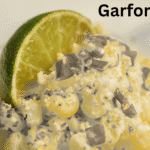The question “Why is 24ot1jxa bad?” has gained attention recently, as people encounter this strange combination of characters in search results, obscure websites, and questionable online content. At first glance, the term looks meaningless—yet its sudden appearance has caused confusion, speculation, and concern among users who wonder whether it represents malware, a cyber threat, or a suspicious tracking code.
In this article, we take a deep dive into the origins, potential risks, and misconceptions surrounding the keyword. You’ll learn why people are questioning why 24ot1jxa is bad, what it might indicate, and how to handle unfamiliar digital strings like this one.
What Is “24ot1jxa,” and Why Is It Raising Questions?
The term 24ot1jxa does not correspond to a known product, software, virus, or brand. It appears to be a randomized alphanumeric string, similar to the ones used in:
-
Tracking parameters
-
Autogenerated URLs
-
Database identifiers
-
Bot-created content
-
Script fragments
The randomness alone is enough to make people uneasy—especially when attached to an unknown source. This is why many users search for why 24ot1jxa is bad, hoping to find clarity or reassurance.
But while the term doesn’t have an official definition, several factors could make it appear suspicious or “bad” in certain contexts.
Why Is 24ot1jxa Bad? Key Reasons Behind the Concern
Below are the main reasons people associate the term with digital risk. These explanations are based on common behavior patterns in online threats and how similar strings are used in real cyber incidents.
1. It Resembles Strings Used in Malicious URLs
Cybercriminals often embed random characters like 24ot1jxa into links to:
-
Hide malicious redirects
-
Bypass spam filters
-
Mask phishing activity
-
Obscure the true destination of a URL
For example, a dangerous link might look like:
While the string itself may not be dangerous, its format mimics typical malicious URL structures, which causes users to assume it’s harmful.
2. Randomized Codes Are Common in Spam and Bot-Generated Pages
Bots that create fake pages or spam content often generate meaningless strings for:
-
Tracking
-
File naming
-
Placeholder text
-
Automated indexing
If 24ot1jxa originated from such content, it would naturally end up associated with:
-
Low-quality websites
-
Spam-filled search results
-
Black-hat SEO content
-
Autogenerated articles
-
Suspicious advertisements
This is one of the strongest reasons people perceive 24ot1jxa as bad.
3. It Could Be Tied to Hidden Scripts or Tracking Pixels
Sometimes, strings like 24ot1jxa appear inside hidden elements of a webpage, such as:
-
JavaScript code
-
Tracking pixels
-
Embedded analytics
-
Third-party ad scripts
These elements are often invisible to normal users but show up in:
-
Developer tools
-
Page source code
-
Error logs
When users stumble upon it unexpectedly, they naturally begin asking why 24ot1jxa is bad and whether their device is being tracked without consent.
4. The Term Has No Verified Origin, Creating Fear and Suspicion
Uncertainty triggers concern.
When a user encounters a random sequence with no explanation, the natural reaction is to assume danger.
This fear intensifies when:
-
The source looks untrustworthy
-
The page quality is poor
-
The term is repeated across multiple unrelated websites
-
It appears in odd contexts
Because the digital world is full of real threats, people have grown cautious—and anything that seems odd or unexplainable instantly feels “bad,” even if it isn’t.
5. Search Algorithms Amplify the Mystery
Search engines sometimes highlight unusual queries simply because a small group of people are curious about them. Once a few individuals begin asking “Why is 24ot1jxa bad?”, the term starts appearing in:
-
Search suggestions
-
Auto-complete lists
-
Trend reports
This creates a self-reinforcing loop:
-
People see the phrase in suggestions.
-
They search it out of curiosity.
-
The algorithm believes it is becoming popular.
-
More people see the suggestion.
-
The cycle continues.
This makes the term look more meaningful—or dangerous—than it actually is.
Possible Explanations for Its Appearance Online
Although there is no definitive explanation for 24ot1jxa, several plausible theories exist.
A. It May Be a Fragment of an Autogenerated URL
Some systems create random codes for URL paths, such as:
-
Content IDs
-
Session tokens
-
Tracking parameters
-
Image file names
It’s entirely possible that 24ot1jxa was accidentally indexed by search engines from one such autogenerated path.
B. It Could Be a Placeholder Value from Testing or Development
Developers often test:
-
Databases
-
CMS systems
-
Analytics tools
…by inserting random strings.
If those test values are not properly deleted, they can appear in public pages.
C. It Might Come From a Defunct or Spam Website
Spam websites commonly use:
-
AI-generated text
-
Nonsensical strings
-
Random identifiers
If 24ot1jxa originated from such a site, it could spread across scraped pages or low-quality directories.
D. It Could Simply Be a Random String With No Special Meaning
Sometimes, the simplest explanation is the most accurate:
The term might just be a meaningless combination of characters that happened to get indexed online.
Should You Be Worried if You See 24ot1jxa?
Most likely no, but it depends on the context.
✔ If it appears in a suspicious link → Avoid clicking
✔ If it shows up on a spammy website → Leave immediately
✔ If it appears in an email → Delete or scan for phishing
✔ If it’s found in your browser history unexpectedly → Run a malware scan
The term itself is probably harmless, but its location and behavior determine whether it’s dangerous.
How to Stay Safe When Encountering Unknown Strings Like This
Even if 24ot1jxa is not inherently dangerous, it’s smart to apply basic cybersecurity practices whenever you see unfamiliar codes or URLs.
1. Use a reliable antivirus and scan regularly
Modern tools catch hidden scripts and malicious redirects.
2. Inspect links before clicking
Hover over them to see the real destination.
3. Avoid low-quality websites
Poor design, intrusive ads, and random strings are warning signs.
4. Clear cookies and cache
This removes unwanted tracking parameters.
5. Keep your browser and apps updated
Outdated software is more vulnerable to attacks.
Debunking Myths About 24ot1jxa
Because the term is mysterious, several myths have emerged.
Myth 1: It is a confirmed virus.
No cybersecurity database recognizes it as malware.
Myth 2: Hackers use it to track people.
There is no evidence to suggest this.
Myth 3: It is part of a major cyber attack.
No verified reports support this claim.
Myth 4: It’s a secret government code.
This is pure speculation with no basis.
Myth 5: It can infect devices by appearing in search results.
Viewing a search result cannot infect a device.
Conclusion
The growing question “Why is 24ot1jxa bad?” reflects the digital world’s increasing concern about online safety. Although the term itself does not have an official meaning, its structure resembles identifiers often seen in spam, bot-generated content, suspicious links, or hidden tracking elements. These associations are what make people cautious—not the string itself.
In most cases, 24ot1jxa is simply an obscure, meaningless code that gained attention because of search trends and user curiosity. Still, the concern it sparks highlights a valuable lesson: whenever you encounter unfamiliar digital elements, always prioritize caution, awareness, and cybersecurity best practices.
FAQs
1. Is 24ot1jxa a virus?
No. There is no evidence that 24ot1jxa is a virus or recognized malware.
2. Why is 24ot1jxa appearing in search results?
It may be tied to low-quality websites, bot-generated content, or search trends that amplified the term.
3. Should I worry if 24ot1jxa appears in a URL?
You should be cautious. While the string itself isn’t harmful, unfamiliar URLs can be risky.
4. Can 24ot1jxa track my personal information?
There is no indication that it can track anything. However, always avoid clicking unknown links.
5. How do I stay safe from suspicious digital terms like this?
Use antivirus software, avoid shady sites, check URLs before clicking, and keep your devices updated.












